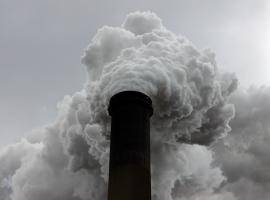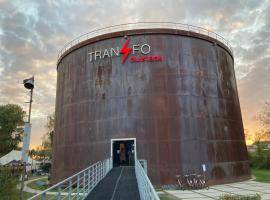The original RE/SOURCED concept aimed to create a local renewable energy “system” that would generate renewable energy and distribute it to households and businesses located on the Transfo site. The site is unusual in that it has a mix of social and private residential housing, a range of outdoor amenities and a newly renovated office block (in the restored power station building).
The original concept assumed that if excess electricity was generated on site, it would be "exported" from the Transfo grid to the public grid while if there was insufficient electricity produced, the system would “import” electricity from the public grid. Consumers (households and businesses) would receive a single bill showing how much energy they used and the proportion coming from the public and Transfo grids.
At a project level, RE/SOURCED would create the system comprising:
- An array of Solar PV panels and other (smaller) generation
- A Combined Heat and Power (CHP) system generating heat and some electricity
- Electricity storage using second life batteries
- A smart DC Grid
- A single point of common coupling between the RE/SOURCED system and the public grid allowing electricity to be “sold” to the grid or “bought” from it
- Infrastructure to convert the DC electricity produced by the Solar PV arrays to AC
- A computerised, cloud-based energy management system (EMS) to enable the operation of the grid to be optimised.
In addition, a wind turbine was to be installed on-site but recent changes to the rules governing the proximity of energy generating devices from existing power-line infrastructure prevented this from being possible (the minimum allowable distance was increased and the Transfo turbine would have been too close). An Energy Community would be created to allow Transfo’s households and businesses to be actively engaged in owning and operating the system in a way that would best suit the interests of their community.
The RE/SOURCED project partners anticipated that the system’s assets would be transferred to the Energy Community (effectively an asset transfer) and that the Community would use the revenue generated by the operation of the system to repay this cost. Implicitly, it was anticipated that this asset transfer would be an initial liability for the Energy Community but that as the debt was paid off, the Energy Community would own an asset of significant value and one that could be developed, expanded and enhanced over time (for example, through the addition of new renewable energy generating capacity).





















